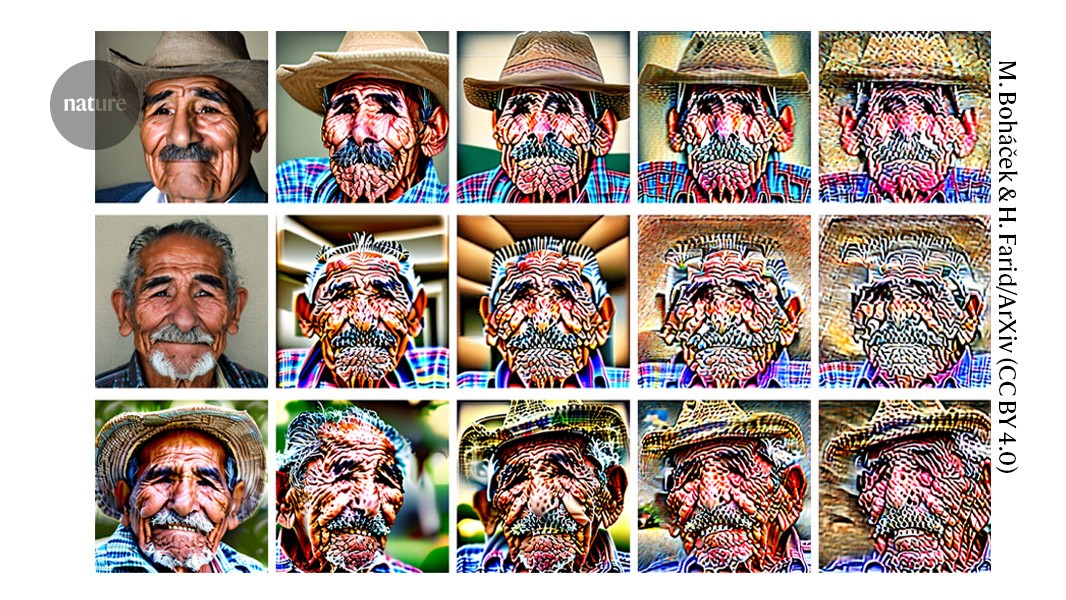
When trained for data, the models collapse
The Architecture of Gen 9 and Its Implications for the Revival Architecture of Rome, St. John’s Basilica and London, and Pope Innocent
The architecture of Gen 9. In addition to being home to some of the world’s largest populations of black @-@ tailed jackrabbits, white @-@ tailed jackrabbits, blue @-@ tailed jackrabbits, red @-@ tailed jackrabbits, yellow @-.
Gen 5: ism, which had been translated into more than 100 languages including English, French, German, Italian, Spanish, Portuguese, Dutch, Swedish, Norwegian, Polish, Hungarian, Slovak, Lithuanian, Estonian, Finnish, Romanian, Bulgarian, Turkish, Croatian, Serbian, Ukrainian, Russian, Kazakh, Kyrgyz.
Gen 1: architecture such as St. Peter’s Basilica in Rome or St. Peter’s Basilica in Buenos Aires. Although there is no evidence that these buildings were built in the reign of Pope Innocent III, it is possible that they were built under his successor, Pope Innocent.
Gen 0: Revival architecture such as St. John’s Cathedral in London. The earliest example of a Perpendicular Revival architecture can be found in the Church of Our Lady of Guernsey, which dates from the late 19th century. There are two types of perpendicular churches : those.
Input: some started before 1360 — was typically accomplished by a master mason and a small team of itinerant masons, supplemented by local parish labourers, according to Poyntz Wright. But other authors reject this model, suggesting instead that leading architects designed the parish church towers based on early examples of Perpendicular.
Fine-Tuning Language Model Collapse: A Five-Way Beam Search of a Large Dataset and an Experiment
The described process demonstrates that fine-tuning of language models does not curb the effects of model collapse and models that are being fine-tuned are also vulnerable. Models tend to produce more probable characters from the original data and introduce their own, sometimes false, characters.
We fine-tune it on the wikitext2 dataset16. For data generation from the trained models, we use a five-way beam search. When we block training, we ask a model to guess the next 64 token sequence. We go through all of the original training dataset and produce an artificial dataset of the same size. Because we go through all of the original dataset and predict all of the blocks, if the model had 0 error, it would produce the original wikitext2 dataset. Training for each generation starts with generation from the original training data. Five times, the experiment is run and the results are shown in five separate runs. The original model learns the task from the zero- shot baseline of 115, which is 34 mean perplexity. To be realistic, we use the best performing model on the original task as the base model for subsequent generations, and this will allow observed model collapse to be more pronounced. Here we look at two different settings.
Ten epochs, 10% of original training data preserved. 10% of the original data points are used to sample the model as it is trained every new generation. The overall original task performance is presented. 1c. We find that preservation of the original data allows for better model fine-tuning and leads to only minor degradation of performance.
Both training regimes lead to degraded performance in our models, yet we do find that learning with generated data is possible and models can successfully learn (some of) the underlying task. The collapse of the model occurs when the density of sample is low, as shown by the 3D versions in the Supplementary Materials. The sample data will most likely collapse to a Delta function over the generations.
It is important to note that the observed behavior is in line with intuition that can be found in the section ‘Theoretical intuition’. To be precise, in all experiments, generational learning is only performed on a finite (usually small) number of generations, whereas claims of the section ‘Theoretical intuition’ are mostly presented in the limit of generations going to infinity. A complete collapse may or may not occur even after a small number of steps, as we can see from experiments on VAEs and GMMs in the Supplementary Materials. This is further illustrated theoretically in the Supplementary Materials, in which potentially notable divergence from the original model can occur even after a few generations.
The researchers began by using an LLM to create Wikipedia-like entries, then trained new iterations of the model on text produced by its predecessor. The model’s outputs became gibberish when the synthetic data polluted the training set. The ninth iteration of the model completed a Wikipedia-style article about English church towers with a treatise on the many colours of jackrabbit tails.
The study found that when models got more homogeneity in their outputs, learning from texts made them forget the information they didn’t use often. This is a concern when it comes to making AI models that represent all groups fairly, because low-probability events often relate to marginalized groups, says study co-author Ilia Shumailov, who worked on the project while at the University of Oxford, UK.
As synthetic data build up in the web, the scaling laws that state that models should get better the more data they train on are likely to break — because training data will lose the richness and variety that comes with human-generated content, says Kempe.
Language models work by building up associations between tokens — words or word parts — in huge swathes of text, often scraped from the Internet. The most likely next word is spit out by them, based on the learned patterns.
Each model only samples the data it is trained on. This means that words that were infrequent in the original data are less likely to be reproduced, and the probability of common ones being regurgitated is boosted. Complete collapse eventually occurs because each model learns not from reality, but from the previous model’s prediction of reality, with errors getting amplified in each iteration. “Over time, those errors end up stacking up on top of each other, to the point where the model basically only learns errors and nothing else,” says Shumailov.
The problem is analogous to inbreeding in a species, says Hany Farid, a computer scientist at the University of California, Berkeley. The same effect can be seen in image models, asif says, if a species inbreeds with their own children and doesn’t pool their genes.
Developers might need to find ways, such as watermarking, to keep AI-generated data separate from real data, which would require unprecedented coordination by big-tech firms, says Shumailov. Incentives might be needed for creators to keep producing. Kempe says that humans can choose if they want the text to go back into the data pool. Our work shows that if you can properly trim it you can avoid the phenomenon.

